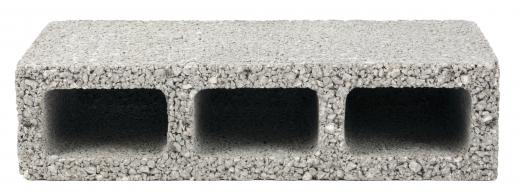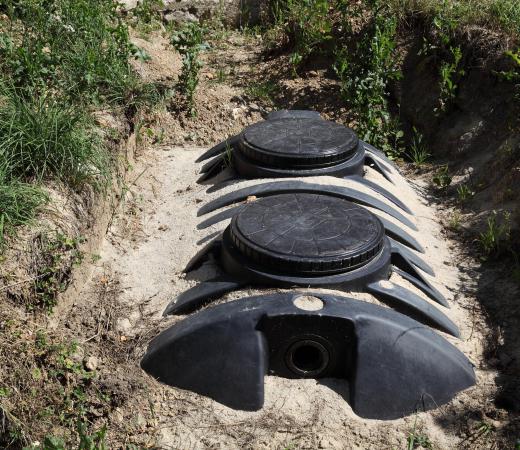The happenings and goings on inside of a cement factory are a complex ballet of mixing aggregates — sand and stone — and cement with water and chloride. This mixture is measured out in a precise mix and emptied into a large vehicle known as a cement mixer. There are typically several grades and types of aggregate stored in the cement factory used to mix certain types of concrete. Occasionally, a cement factory will produce what is known as precast cement components on site. These components consist of concrete blocks, tiles and cement statues.
Cement or concrete is nothing more than aggregates and a product commonly known as Portland cement mixed with water. The cement is named after a similarly-colored stone, Portland stone, found on the Isle of Portland in Dorset, England. As the materials are mixed, a process known as hydration causes the cement to harden, thus binding the sand, stone and rocks of the aggregate into a very hard and durable substance. The size of the aggregate typically defines the strength of the concrete when it has cured. Workers inside the cement factory sort materials into specific storage bins so that the proper materials can be gathered and mixed when creating a certain cement mixture.

Water is the typical liquid additive that causes the cement mixture to harden and cure. In some cooler climates, chloride is also added in small amounts to aid in the proper curing of the mix in cold conditions. Operating a cement factory requires many cement trucks to deliver the cement to various work sites. A cement truck is a large truck equipped with a very large mixing drum into which the cement is placed to be mixed. The drum turns slowly, causing the cement to ride up into the air on long, paddle-like assemblies mounted on the interior walls of the mixing drum.

The cement trucks require a lot of maintenance and cleaning. Workers inside of the cement factory spend a great deal of time completing maintenance on all of the trucks, conveyors and other mechanical devices used inside of a cement factory to keep the entire operation running smoothly. Some of the larger operations also produce what is called precast cement items that are for sale to customers. Septic tanks, drainage tubes and even cement blocks are made by pouring wet concrete into molds and then removing the product once the cement has hardened. Other items, such as yard ornaments, bird baths and even grave stones, are also made inside of some cement factories.
